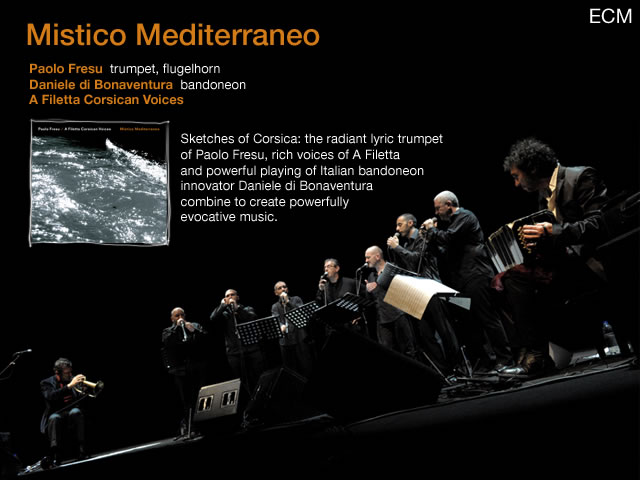Moment's Notice
Reviews of Recent Recordings
Ellery Eskelin + Gerry Hemingway
Inbetween Spaces
Auricle AUR-11
Jin Hi Kim + Gerry Hemingway
Pulses
Auricle AUR-10
Terrence McManus + Gerry Hemingway
Below the Surface of
Auricle AUR-9




Gerry Hemingway has made a special art of the duet, a specific musical process that he again draws attention to with the simultaneous release of these three duets on his Auricle label, continuing and extending the pattern of the December 2008 release of duets with his long-running musical partners John Butcher and Thomas Lehn. Hemingway is a particularly devoted and imaginative exponent of the duet, evident in both the variety of strategies he finds on each of these CDs – from traditional jazz drumming to pitched percussion – and the way in which each of these duets develops a special language.
Inbetween Spaces is rooted solidly in the dialogue of jazz and the larger notion of linearity. Eskelin belongs to a tenor saxophone tradition that’s as old as Bud Freeman and Coleman Hawkins, playing with a throaty roar, an infinitely nuanced sense of the human voice transfused through a pipe, sudden burred runs and reflective asides building to a litany that is suffused with blues, whether the explicit formal underpinnings are invoked or it’s the sense of a single voice’s honest plaint. Together he and Hemingway are a band, Hemingway’s loose snare slaps an empathetic commentary on Eskelin’s lines, his cymbal splashes and drum rolls the architecture, clouds and theatre curtains of this world. These dialogues build until you reach the sustained intensity of “Shaken and Spilt” in which oration and architecture break through any wall that might be imagined dividing the two. Each track title is a pair joined by “and,” reflecting the sense of dialogue between two specific things, whether it’s the reflection of the opening “thought and motion” or the hard swing of “deft and bounce.” By the concluding “Stars and Treetops,” the spare drum knitting and chattering get very close to the emotive feel of the tenor.
There’s a similar take on a different tradition on Pulses, with Hemingway in duet with Jin Hi Kim, a komungo virtuoso with a background in Korean traditional music who has also played in improvising ensembles with Peter Kowald and Evan Parker. The komungo is a traditional Korean fretted zither, akin in sound to the Chinese guzheng and the larger Japanese koto. The instrument has both a court history and a more recent (19th century) tradition of shamanistic improvisation, the essential background to Kim’s work on both the traditional acoustic version and her own electric variation that are heard here. Much of her playing here operates within traditions of pentatonic scales with strongly emotive melodies and sometimes driving rhythmic patterns, patterns that Hemingway consistently picks up on and expands, enriching the music both timbrally and polyrhythmically. Kim is a forcefully percussive player and she’ll frequently concentrate on single reiterated tones, blurring the line between string instrument and percussion on pieces like “Saturn’s Ring” and the longer “Deimos and Phobus.” The breadth of the duo’s sonic and tonal imagination is most evident in the later “Return” and “Pulses,” with Hemingway exploring the subtle pitch colorings of cymbals and drums while Kim explores both the timbral possibilities of the electric komungo and its microtonal fractures and dissonances.
With its oddly open-ended title, Below the Surface of is also the most mysterious CD here. Hemingway is in duet here with guitarist Terry McManus, a regular collaborator who is also a member of Hemingway’s current quintet. McManus is a guitar explorer, drawing on both traditional and extended techniques in a style that’s nonetheless distinctively pared down, at once emotive, intense and vocal. The opening “Night Ocean” emphasizes the directness and intensity of his attack, isolated notes pulled from the fingerboard with a tone that’s raw and electric. “Glass Lake,” the most traditional piece here, has McManus playing his nylon string stereo guitar in a way that initially suggests the sound of flamenco guitar only to move toward the sound of a koto. He employs controlled electronics on “The Rush to Get There,” the title perhaps an ironic allusion to the presence of “backwards” sound. As with the other duets, Hemingway and his partner seem to grow increasingly close, his percussion taking on an unimagined flexibility. The music becomes ever more elemental, with Hemingway’s drumming increasingly exploring rates of interruption and the diffusion of linearity. “The Dry Land” is full of hollow pail and scratching, whisking sounds, blurring the notion of strings and electronics on the one hand and the drum on the other. The glassy guitar glissandos and dense drumming of “The Disturbance” lead to the concluding “Amber Field” in which the guitar sounds like it’s being played with sticks as the music assumes airs of mystery and menace, ending in a terrain utterly unlike that in which it began and confirming the genuine spirit of improvisation, the spark that drives all of these diverse dialogues.
–Stuart Broomer
